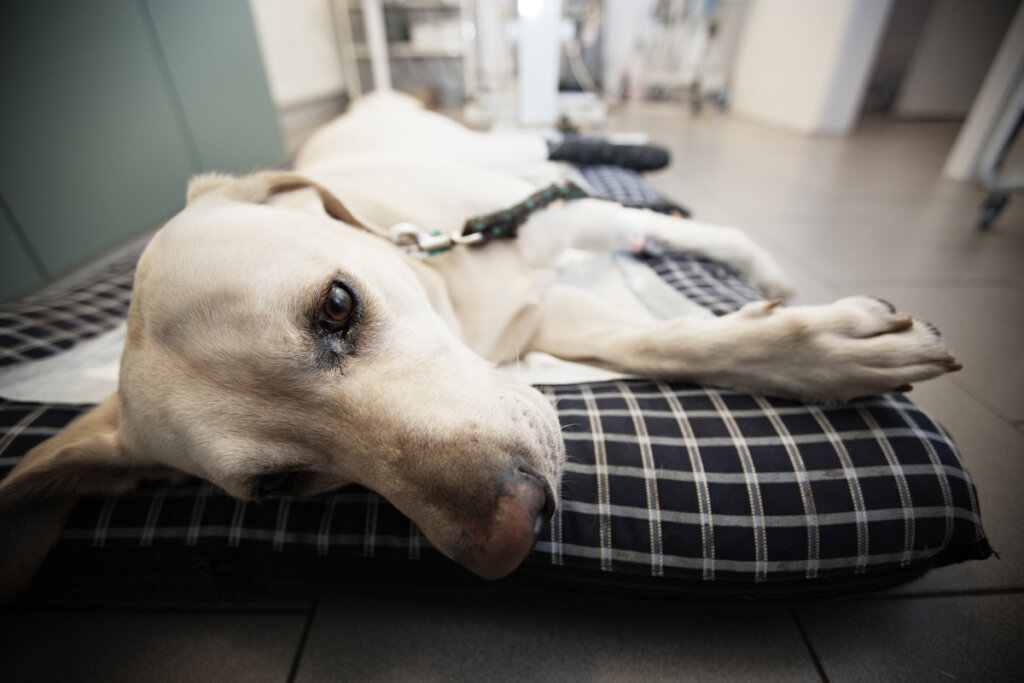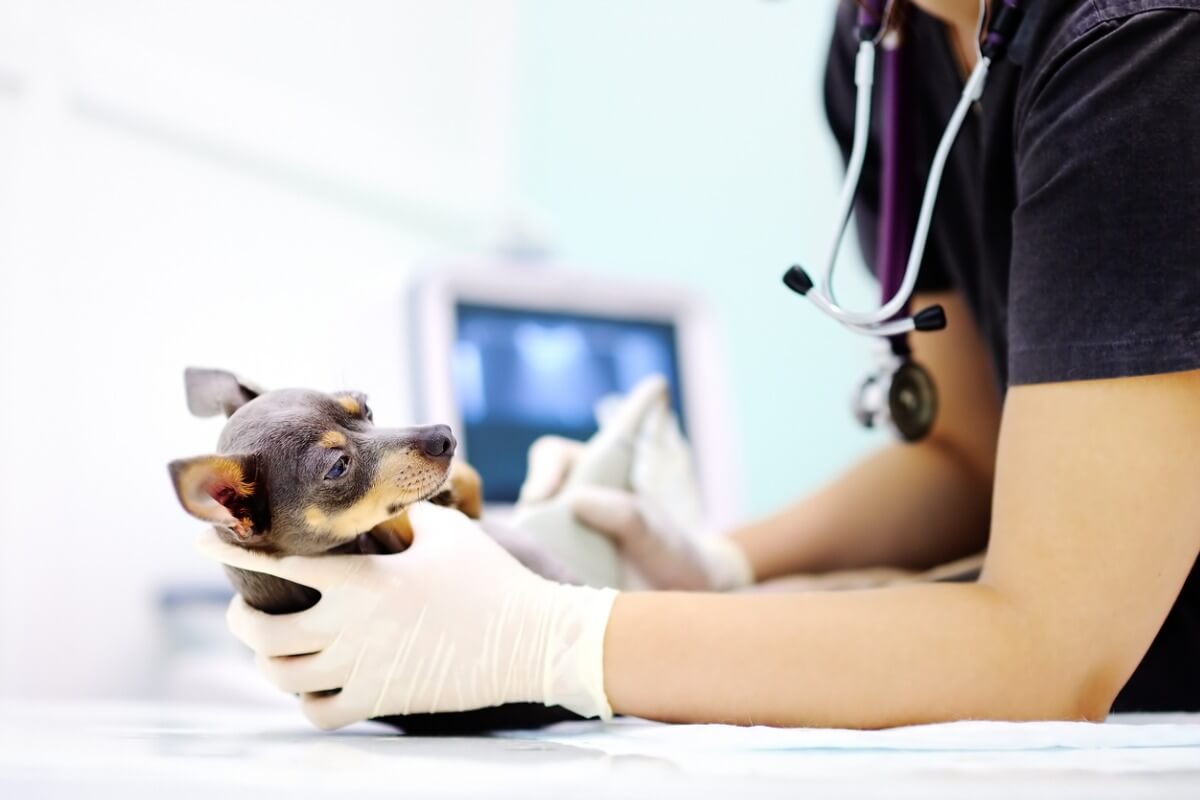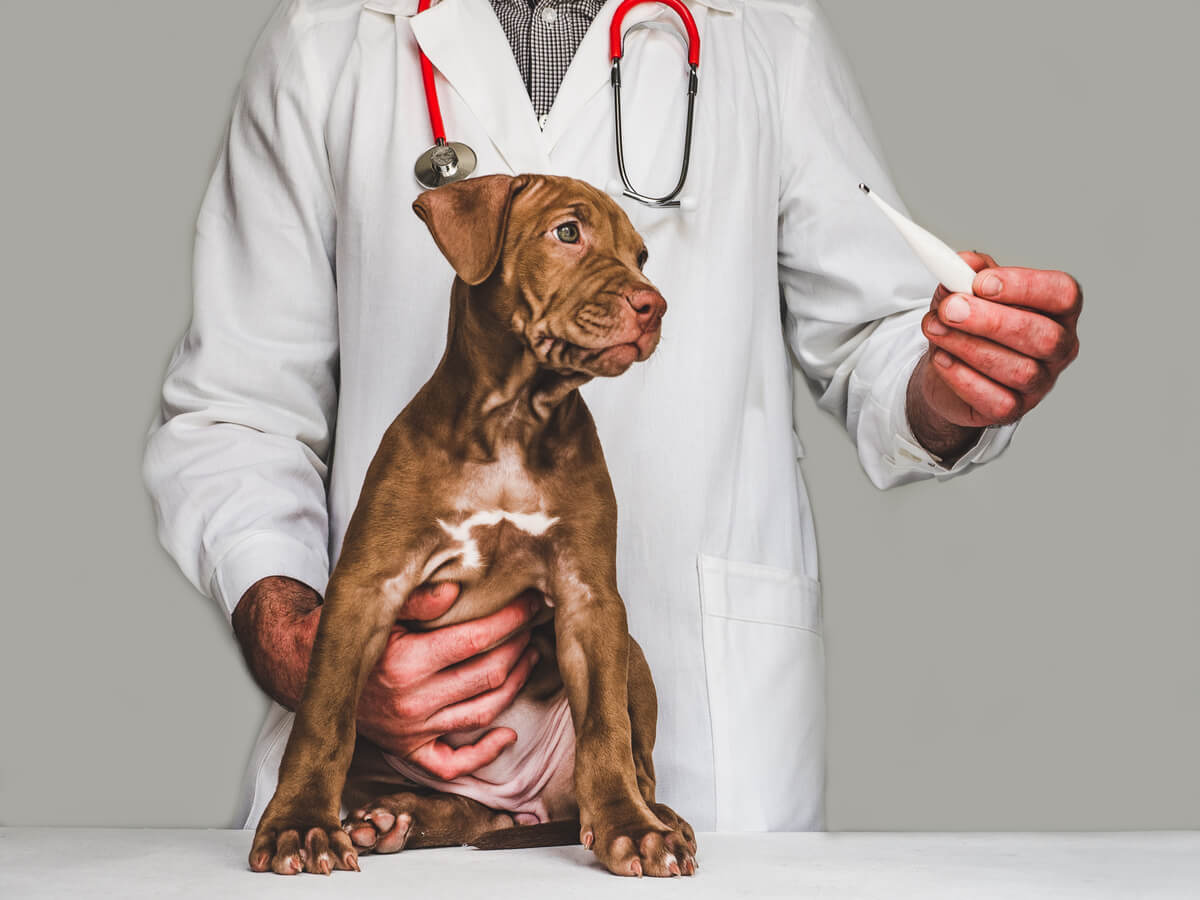Perineal Hernia in Dogs: Symptoms, Treatment and Care

Perineal hernia in dogs isn’t a fatal condition in itself, but if it involves other organs, it may require emergency surgery. This ailment usually affects older male dogs, when certain muscles of the body begin to lose tone.
Hernias manifest with the bulging of the adjacent region they appear in, so the most common thing you’ll see in a pet is a lump. Keep reading, and we’ll give you the keys to detect the symptoms of perineal hernia in dogs and what the relevant treatments and care are.
What is a perineal hernia?
The rectum, the final part of the large intestine that stores waste before its expulsion, is supported by what is known as the pelvic floor. This muscular diaphragm keeps all the parts of the abdomen in their normal position.
When dogs reach a certain age – or have previous pathologies – they can suffer a deterioration of this muscle. If it breaks, then part of the intestine escapes and is trapped inside the hernia. This means that the guts leave the abdominal cavity to be lodged between the muscle and the skin.
Although the specific causes for the appearance of perineal hernia aren’t known, most cases occur in elderly male dogs. Therefore, it’s believed that male hormones and an enlarged prostate may be related.
From the moment the rupture occurs, the intestine is exposed between the scrotum and the anus, and so this is where the lump will be located. This pathology usually affects the ability to urinate and defecate, so it can be potentially dangerous for the animal that suffers from it.

Clinical signs of perineal hernia in dogs
As we said, perineal hernia can be detected by the appearance of a lump under or next to the anus. As the intestine is positioned in this unnatural way, it exerts pressure against the anal sphincters, thus preventing the dog from defecating. In addition, on certain occasions an intestinal loop can come out through the hernia and become strangulated.
If this happened, the blood supply wouldn’t flow and a necrosis of that part of the intestine would occur. On the other hand, instead of the intestinal loop, the bladder may come out through the hernia, and the animal will then lose the ability to urinate and could suffer intoxication – by not releasing waste through the urine.
In these different situations, the clinical signs will depend on the affected organs. In general, the most common are the following:
- Depression
- Abdominal pain
- Lethargy and apathy
- Difficulty urinating and / or defecating
- Constipation
- Change in gait
Treatment
Perineal hernia in dogs is easy to diagnose by rectal palpation. The veterinarian will ask for the pet’s complete medical history and will perform all the pertinent tests to differentiate a hernia from a potential tumor.
Although it isn’t really necessary, an ultrasound can help determine the content of the hernia to better define it and give the most successful treatment. Also, if the prostate is enlarged, it’s normal for the vet to order extra tests.
The treatment of perineal hernia in dogs will depend entirely on its extent. A surgical approach and castration are always necessary. However, there’s non-surgical care available that may work in certain cases.
Surgical treatment is the most recommended in these cases. Through surgery, the contents of the hernia will be placed in its proper place and the region of the damaged muscular diaphragm will be repaired.
To prevent the hernia from coming out again, the colon and bladder can be sewn to the abdominal wall, in order to stabilize the organs. Also, the muscular diaphragm is reinforced with a surgical mesh or with musculature taken from another place.
Lastly, castration is carried out in order to lower male hormones, reduce the size of the prostate, and decrease the likelihood that the hernia will reappear. All of this will prevent future complications.
Post-operation care
First, dogs will need to take an antibiotic treatment to prevent any type of infection after surgery. In addition, the use of analgesics is common to prevent the animals from suffering pain.
Once at home, the tutor must perform a series of actions to facilitate healing. The main thing is to change the animal’s diet to one rich in fiber and, with a lot of moisture, to ensure intestinal transit. The area will be severely affected and the animal should be helped as much as possible so that the feces travel through the intestines without causing pain or discomfort.
Another important consideration is exercise. Although it should be reduced to a minimum, the animal can’t be allowed to remain lying down continuously. You’ll need to go out several times a day and walk, 2 or 3 minutes at a time.
Finally, it should be noted that the frequency with which the dog goes outside should gradually increase. That is, if before you went for a walk 3 times, now you will have to do it 6 or 7, but for a very short time. Little by little, you will be able to go back to doing your walks as normal.

In most cases, the prognosis for the disease and surgery are very good. However, each condition will depend on the etiology and the veterinarian may suggest more regular visits for more efficient follow-up. If you suspect that your dog is suffering from a perineal hernia, don’t hesitate to go to a professional promptly.
All cited sources were thoroughly reviewed by our team to ensure their quality, reliability, currency, and validity. The bibliography of this article was considered reliable and of academic or scientific accuracy.
- Cinti, F., Rossanese, M., & Pisani, G. (2021). A novel technique to incorporate the sacrotuberous ligament in perineal herniorrhaphy in 47 dogs. Veterinary Surgery.
- Maute, A. M., Koch, D. A., & Montavon, P. M. (2001). Perineal hernia in dogs–colopexy, vasopexy, cystopexy and castration as elective therapies in 32 dogs. Schweizer Archiv fur Tierheilkunde, 143(7), 360-367.
- Pekcan, Z., Besalti, O., Sirin, Y. S., & Caliskan, M. (2010). Clinical and surgical evaluation of perineal hernia in dogs: 41 cases. Kafkas Univ Vet Fak Derg, 16(4), 573-578.
- Vnuk, D., Maticic, D., Kreszinger, M., Radisic, B., Kos, J., Lipar, M., & Babic, T. (2006). A modified salvage technique in surgical repair of perineal hernia in dogs using polypropylene mesh. VETERINARNI MEDICINA-PRAHA-, 51(3), 111.
- Weaver, A. D., & Omamegbe, J. O. (1981). Surgical treatment of perineal hernia in the dog. Journal of Small Animal Practice, 22(12), 749-758.
